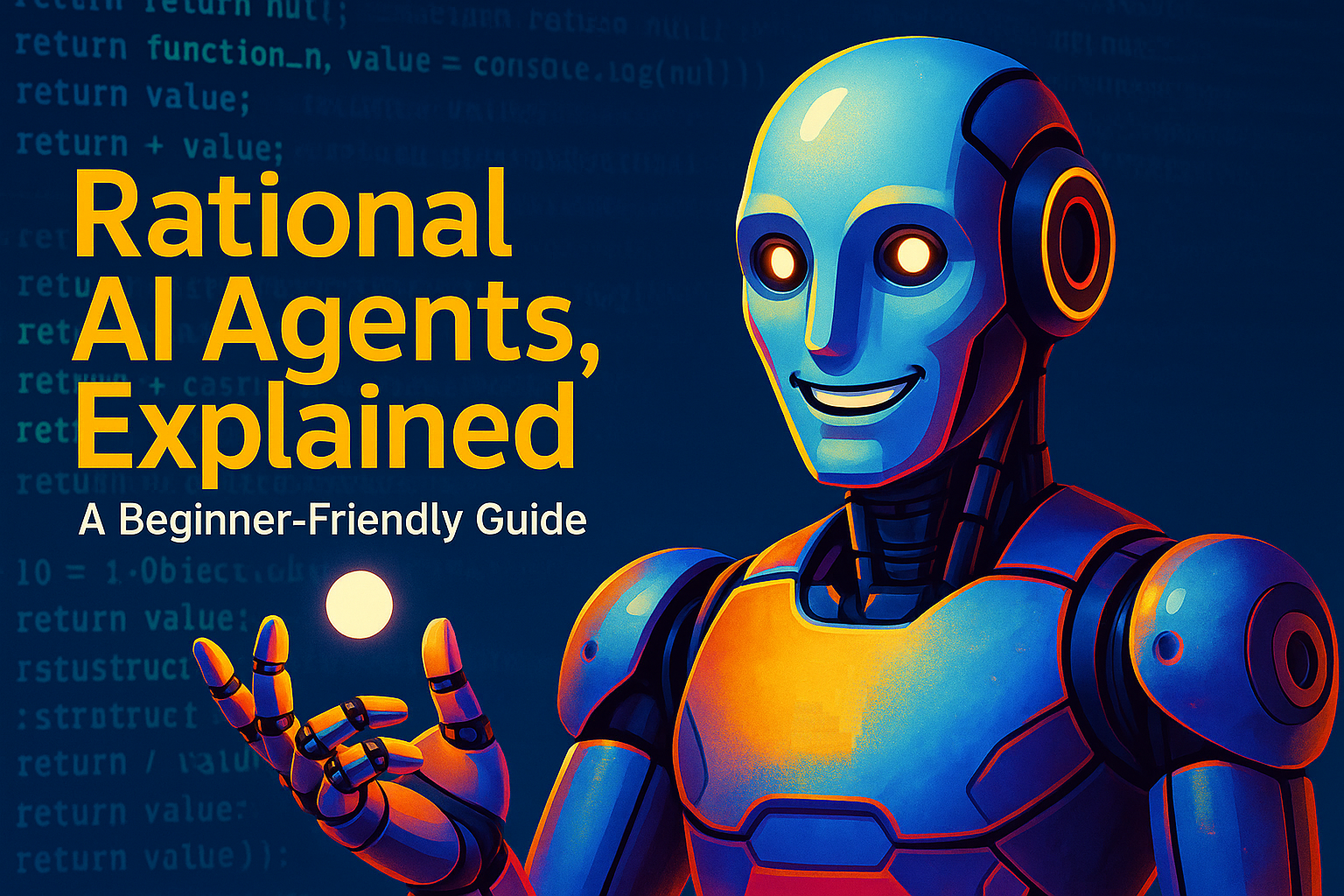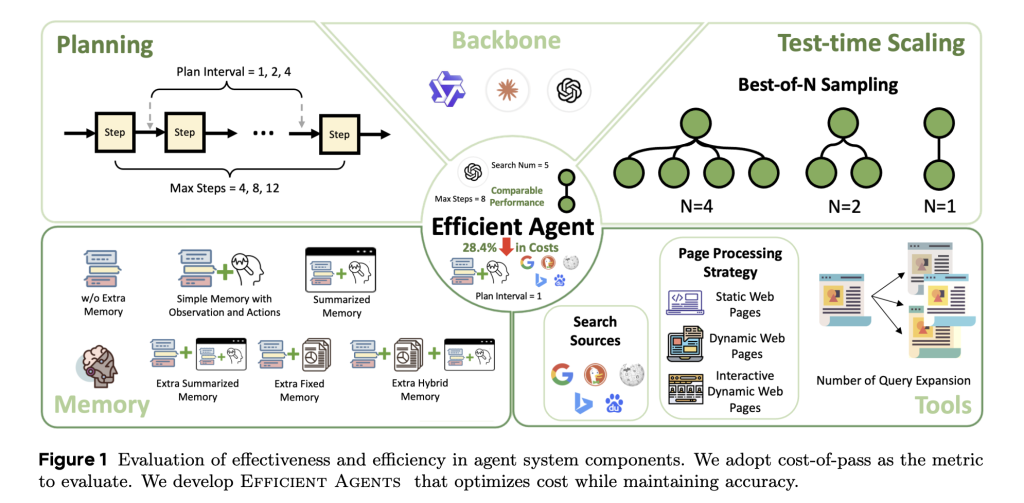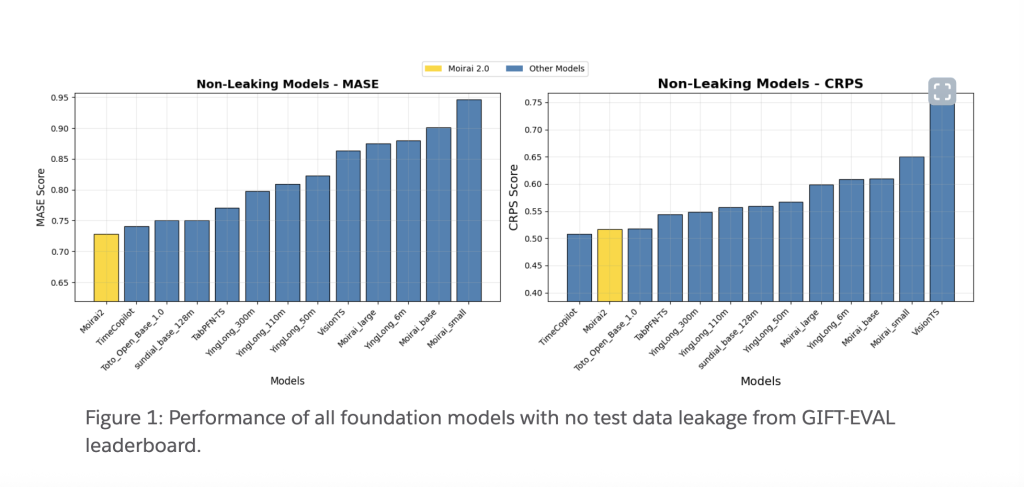
We all know and have heard about the autonomous AI agents, systems that can think, plan, and act on your behalf to complete tasks. Now, if we go further, we will encounter something more practical and useful: Rational AI agents. In this article, we’ll talk about rational AI agents, what they are, how they work, where they fit in, and more.
What is a Rational AI Agent?
In the simplest terms, a rational AI agent is an AI system designed to always take the best possible action to achieve a specific goal. Rational doesn’t mean moral or perfect. Think of it as the ultimate pragmatist. In classic AI terms, an agent perceives the world (via sensors), reasons with what it knows, and acts (via actuators) to optimize that measure.
Being a rational AI agent is not just about following a set of pre-programmed rules; it’s about observing its environment, weighing the potential outcomes of different actions, and choosing the one that is most likely to produce the best expected outcome given current knowledge.
What makes rational AI agents special?
A rational AI agent is a goal-oriented problem solver. It operates in a continuous cycle of perceiving, thinking, and acting. It takes in information from its surroundings, processes that information in the context of its objectives, and then takes action to get closer to its goal.
This might sound abstract, but you’ve likely interacted with a rational AI agent today without even realizing it.
- That GPS app that rerouted you around a traffic jam? That was a rational agent at work, calculating the best possible route to get you to your destination on time.
- The fraud detection system that flagged a suspicious transaction on your credit card? That was a rational agent, weighing the risk factors to protect your finances.
Now that you may have understood what a rational AI agent is, it is time to know how it works.
🔥 For Partnership/ Promotion on AI Tools Club, click on learn more.
How rational agents work (simplified)
To truly appreciate the power of rational AI agents, it’s helpful to understand their fundamental components and how they work together to make intelligent decisions. While the technology behind them is complex, the concepts are surprisingly intuitive.
Rational agents run a tight loop: sense → plan → act → learn → repeat. Practically, that loop is powered by a few core pieces:
Sensors: How they perceive
Every rational agent needs a way to interact with its environment. Sensors are its eyes and ears, allowing it to perceive the world around it. For the physical world, these could be cameras, LiDAR, and GPS. For a customer service chatbot, the sensors are the APIs, logs, and user inputs.
Actuators: How they affect the world
Actuators, on the other hand, are the agent’s hands and feet, allowing it to take action. This could be anything from the motors that turn the wheels of a car to the system that sends an email or updates a database.
Performance Measure: The scoreboard
This is the agent’s definition of success. It’s the metric that the agent is constantly trying to maximize.
- For a pricing algorithm, the performance measure might be maximizing revenue.
- For a delivery drone, it could minimize delivery time while maximizing battery life.
This clear objective is what guides all of the agent’s decisions.
Agent program: The logic and memory that evaluate choices
The “agent program” is the main logic that processes the information from the sensors and decides what action to take. It’s the part of the system that weighs the options, predicts the outcomes, and selects the best course of action based on the performance measure.
Internal state: Keep context over time
Rational agents aren’t just reactive; they have an “internal state,” which is essentially a memory of past events. This allows them to learn from experience and make better decisions over time. They also have a “knowledge base,” a repository of facts and rules that they can draw upon to inform their choices.
The Learning Loop: How it improves with experience
Perhaps the most important aspect of a rational AI agent is its ability to learn. It operates in a continuous cycle: perceive, decide, act, and then learn from the result. If an action leads to a positive result, the agent is more likely to take that action in the future. If the outcome is negative, it will adjust its strategy. This constant feedback loop allows the agent to adapt and improve its performance over time.
The details may change by domain (self-driving cars, support copilots, trading systems), but the loop stays the same: keep gathering signals, evaluate options, take the best step, learn from the result, and go again.
Rational vs. “intelligent” AI agents
Both Rational and intelligent agents perceive and act, but they are different in terms of priorities.
- “Intelligent” agents often emphasize flexibility and learning: they adapt, explore, and generalize.
- Rational agents can learn too, but they’re relentlessly goal-aligned: every move is justified by its predicted contribution to the metric you care about.
In practice, many production agents blend both: they explore when uncertainty is high, exploit when confidence rises, and always keep the metric in view.
Sign up for AI Tools Club
Find the Most Trending AI Agents and Tools
No spam. Unsubscribe anytime.
Why this matters to business
We are in times when competition is intense and customer expectations are ever-increasing; therefore, the ability to make smart, data-driven decisions at scale is no longer a luxury, it’s a necessity. Because a rational agent carries a clear performance measure in real time, they are being deployed across different industries in places where the stakes are measurable, like optimizing processes, improving customer experiences, and driving growth.
- Customer success: Interpret intent, pick the next-best action, escalate only when it raises resolution speed or CSAT.
- Dynamic pricing: Balance demand, inventory, competitor moves, and margins, then set (or recommend) the price that best fits your target.
- Fraud detection: Score risk and choose “allow, flag, challenge” to minimize fraud while preserving a good user experience.
- Personalization: Determine the most likely recommendation to drive engagement, considering the current context and constraints.
Practical real-world examples:
- In e-commerce, rational agents are used for dynamic pricing, adjusting the cost of products in real-time based on factors like demand, rival pricing, and inventory levels. They are also the driving force behind the personalized recommendation engines that suggest products you might like, increasing sales and customer engagement.
- In the world of finance, rational agents are at the forefront of fraud detection, analyzing transactions in real-time to find and prevent fraudulent activity.
- They are also being used in human resources (HR) to screen job applicants and identify the best candidates for a role.
Goal-based, utility-based… where do rational agents fit?
You’ll hear two design patterns: goal-based (did we achieve X?) and utility-based (how good is each outcome on a sliding scale?). Rational agents can use either, but utility-based approaches are often better when there are trade-offs or uncertainty, because they let the agent compare imperfect options and pick the one with the highest expected value.
Bounded rationality (a.k.a. real life)
In the real world, agents never have perfect information or infinite computing power. That is where bounded rationality comes in, where rather than chasing a theoretical optimum, agents “satisfice”. The AI agents choose the best option they can compute with the time and data they have. That’s not settling; it’s practical design that keeps systems capable and responsive under constraints.
The quick-scan version: features, functions, and key points
- Core idea: A rational agent chooses the action that maximizes a defined performance measure, given what it currently knows.
- How it works: A Continuous loop of sensing, deciding, acting, and learning, which is backed by sensors, actuators, internal state, a knowledge base, and a performance metric.
- Why it’s better than rules: Handles trade-offs and uncertainty; adapts decisions to the current context instead of rigid if-then scripts.
- Design choices: Goal-based (binary success) or utility-based (graded outcomes), depending on how you measure value.
- Business wins: Faster, more consistent decisions in support, pricing, fraud, and personalization, where metrics are clear and feedback loops are fast.
- Reality check: Adopt bounded rationality that optimizes within data, time, and compute limits; learn and improve over time.
A note on expectations
Rational agents aren’t magic. They’re disciplined decision-makers. If your performance measure is wrong, they’ll optimize the wrong thing, brilliantly. If your data is thin, they’ll still make the best choice they can, but it may look conservative. That’s where bounded rationality and iterative improvement come in: you evolve both the measure and the model as you learn.
In Conclusion:
Rational AI agents turn systems that just respond into systems that decide. Although rational AI agents aren’t about making machines “think like us,” these systems are built to make better choices, on purpose, with the information they have and the goals we set.
They deliver business outcomes that are fast, consistent, and explainable in plain terms (“we chose X to maximize Y”) by grounding behavior in a clear performance measure and running a tight sense-decide-act-learn loop.
The playbook is straightforward: define the metric, wire up signals and actions, start narrow, and keep the learning loop alive. Do that well, and you move past conversational assistants into decision engines that make every interaction count.
AI Tools Club



